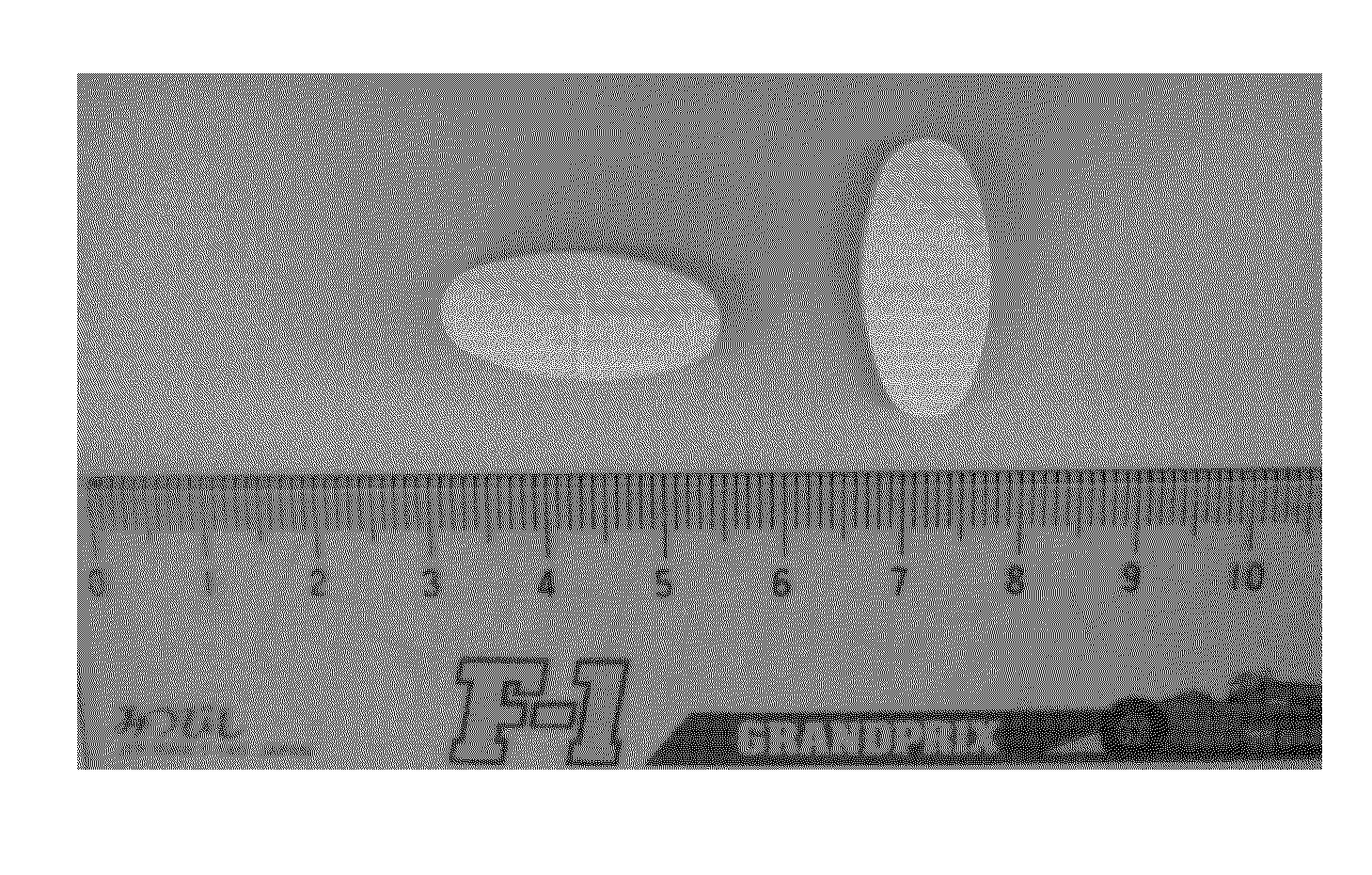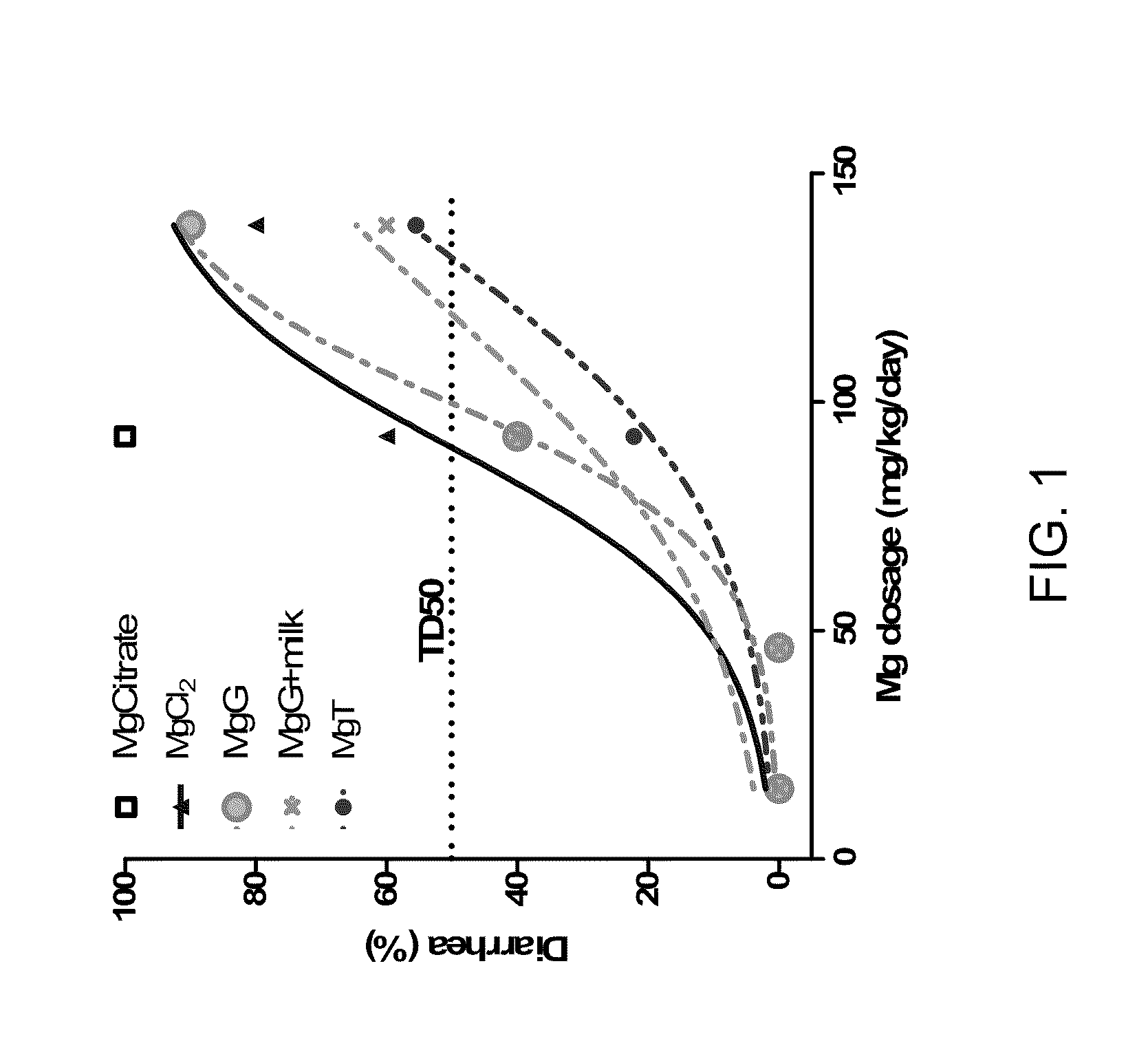Slow release magnesium composition and uses thereof
a technology of magnesium composition and slow release, applied in the direction of drug composition, peptide/protein ingredient, metabolic disorder, etc., to achieve the effect of reducing such adverse effects
- Summary
- Abstract
- Description
- Claims
- Application Information
AI Technical Summary
Benefits of technology
Problems solved by technology
Method used
Image
Examples
example 1
Methods
[0163]Animals: Adult male Sprague-Dawley rats were obtained from Wei Tong Li Hua Beijing, China. Rats were individually-housed with free access to standard food and water under a 12:12 h reversed light-dark cycle, with light onset at 8:00 p.m. On arrival and before the start of the bioavailability experiments (see below), rats were fed a commercial pelleted diet, containing normal magnesium (0.15%) and tap water ad lib. All experimental procedures were approved by the Tsinghua University Committees on Animal Care.
[0164]Treatment with different Magnesium preparations: The following magnesium preparations were used in the present study, Magnesium threonate (Magceutics Inc., USA), Magnesium chloride and glycinate (Modern Eastern Fine Chemical, China), magnesium gluconate and citrate (Sigma-Aldrich, Germany). Lactose was obtained from Biobasic Inc (Beijing, China). In order to supply animals with a dose of 50 mg / kg / day elemental magnesium the following doses of each preparation w...
example 2
Effect of Magnesium Supplementation on the Incidence of Diarrhea
[0170]FIG. 1 shows the incidence of diarrhea in rats fed a variety of magnesium supplements. As the magnesium dose was increased, the percentage of animals that developed diarrhea increased proportionally. At higher doses, magnesium threonate (MgT) was less likely to induce diarrhea. TD50 (toxic dose required to induce diarrhea in 50% of animals) of each compound was as follow: magnesium threonate: 131.5 mg / kg / day; magnesium gluconate in milk (MgG+milk): 119.1 mg / kg / day; magnesium gluconate (MgG): 99.7 mg / kg / day; magnesium chloride (MgCl2): 90.0 mg / kg / day. Magnesium compounds were added to the rats drinking water, thereby mimicking slow release of Magnesium compounds as the rats drink over time.
example 3
Elevation of Magnesium Concentration in Cerebrospinal Fluid ([Mg2+]CSF)
[0171]Magnesium chloride (MgCl2), magnesium gluconate in milk (MgG+milk), and magnesium threonate (MgT) were fed to mice for 24 days. FIG. 3 shows the elevation of magnesium concentration in cerebrospinal fluid ([Mg2+]CSF) following treatment with the different magnesium preparations. Magnesium threonate increased magnesium concentration in cerebral spinal fluid significantly in mice following 24 days of treatment, whereas magnesium chloride and magnesium gluconate in milk had relatively limited effect. The data were significant at day 24 using a one-way ANOVA (p<0.05).
PUM
| Property | Measurement | Unit |
|---|---|---|
| Temperature | aaaaa | aaaaa |
| Fraction | aaaaa | aaaaa |
| Fraction | aaaaa | aaaaa |
Abstract
Description
Claims
Application Information
 Login to View More
Login to View More - R&D
- Intellectual Property
- Life Sciences
- Materials
- Tech Scout
- Unparalleled Data Quality
- Higher Quality Content
- 60% Fewer Hallucinations
Browse by: Latest US Patents, China's latest patents, Technical Efficacy Thesaurus, Application Domain, Technology Topic, Popular Technical Reports.
© 2025 PatSnap. All rights reserved.Legal|Privacy policy|Modern Slavery Act Transparency Statement|Sitemap|About US| Contact US: help@patsnap.com



